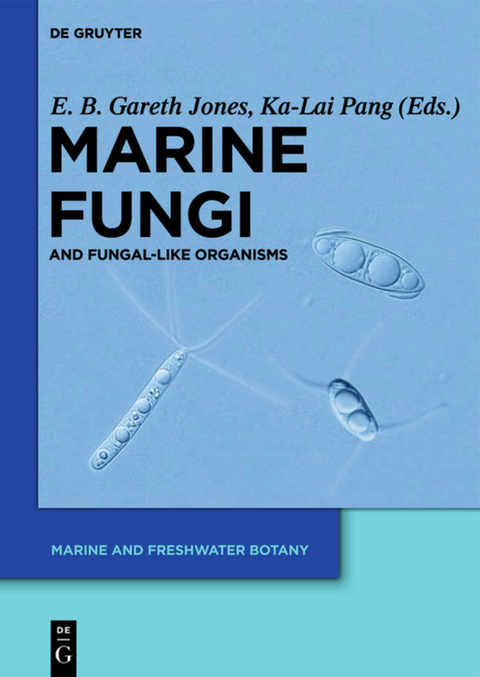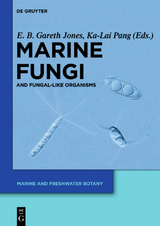Marine Fungi
and Fungal-like Organisms
Seiten
2012
De Gruyter (Verlag)
978-3-11-026398-5 (ISBN)
De Gruyter (Verlag)
978-3-11-026398-5 (ISBN)
In-depth knowledge about aquatic plant species, from their sub-cellular organization to their interactions within ecosystems, is of utmost importance as the world faces the challenges of the 21st century. From losses in biodiversity and changes in aquatic ecosystems to the potential of algal biofuel and artificial photosynthesis, some of the hottest topics of our time rely on basic research in aquatic botany. This new book series covers topics from all of the disciplines of marine and freshwater botany at all levels of biological organization. Primary subject areas are: systematics, floristics, biogeography, ecology, biochemistry, molecular biology, genetics, chemistry, industrial processes and utilization, and biotechnology of algae and angiosperms. Mycology and microbiology topics are also part of the scope of the series.
Marine fungi play a major role in marine and mangrove ecosystems. Understanding how higher fungi with their spectrum of cellulolytic and ligninolytic enzymes degrade wood tissue, while labyrinthuloids and thraustochytrids further contribute to the dissolved organic matter entering the open ocean is essential to marine ecology. This work provides an overview of marine fungi including morphology and ultrastructure, phylogeny, biogeography and biodiversity. Increasingly, biotechnology is also turning to these organisms to develop new bioactive compounds and to address problems such as decomposition of materials in the ocean and bioremediation of oil spills. These potential applications of marine fungi are also treated. In the light of massive marine oil spills in the past years, the importance of understanding marine fungi and their role in the food chain cannot be underestimated.
Marine fungi play a major role in marine and mangrove ecosystems. Understanding how higher fungi with their spectrum of cellulolytic and ligninolytic enzymes degrade wood tissue, while labyrinthuloids and thraustochytrids further contribute to the dissolved organic matter entering the open ocean is essential to marine ecology. This work provides an overview of marine fungi including morphology and ultrastructure, phylogeny, biogeography and biodiversity. Increasingly, biotechnology is also turning to these organisms to develop new bioactive compounds and to address problems such as decomposition of materials in the ocean and bioremediation of oil spills. These potential applications of marine fungi are also treated. In the light of massive marine oil spills in the past years, the importance of understanding marine fungi and their role in the food chain cannot be underestimated.
E. B. Gareth Jones, National Center for Genetic Engineering and Biotechnology, Pathum Thani, Thailand; Ka-Lai Pang, National Taiwan Ocean University, Keelung, Taiwan (R.O.C.).
"Overall, this is a masterly overview of the subject, which will be a key reference for decades to come."
In: IMA Fungus, The Global Mycological Journal
| Erscheint lt. Verlag | 17.8.2012 |
|---|---|
| Reihe/Serie | Marine and Freshwater Botany |
| Zusatzinfo | 30 b/w and 20 col. ill. |
| Verlagsort | Berlin/Boston |
| Sprache | englisch |
| Maße | 170 x 240 mm |
| Gewicht | 1162 g |
| Themenwelt | Naturwissenschaften ► Biologie ► Botanik |
| Naturwissenschaften ► Biologie ► Limnologie / Meeresbiologie | |
| Naturwissenschaften ► Biologie ► Mikrobiologie / Immunologie | |
| Naturwissenschaften ► Biologie ► Mykologie | |
| Naturwissenschaften ► Biologie ► Ökologie / Naturschutz | |
| Schlagworte | Botanik • Botany • Botany; Marine Science; Microbiology; Mycology • marine science • Meereskunde • Microbiology • Mikrobiologie • Mycology • Mykologie |
| ISBN-10 | 3-11-026398-X / 311026398X |
| ISBN-13 | 978-3-11-026398-5 / 9783110263985 |
| Zustand | Neuware |
| Haben Sie eine Frage zum Produkt? |
Mehr entdecken
aus dem Bereich
aus dem Bereich
Gefäßpflanzen: Grundband
Buch | Hardcover (2021)
Springer Spektrum (Verlag)
CHF 62,95
ein Baum erzählt seine erstaunliche Geschichte
Buch | Hardcover (2024)
Ludwig (Verlag)
CHF 32,15
Buch | Hardcover (2021)
Springer (Verlag)
CHF 125,95




